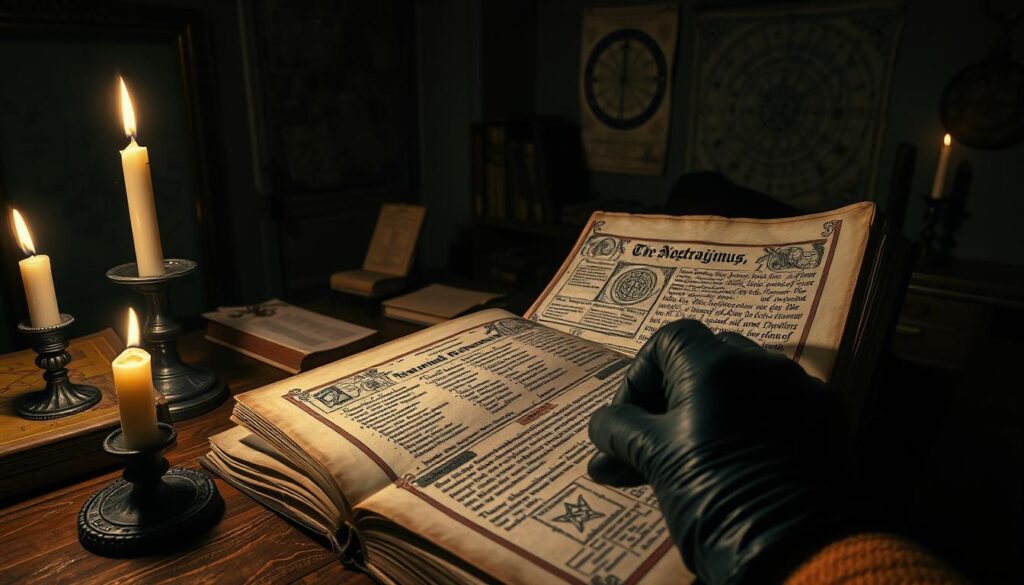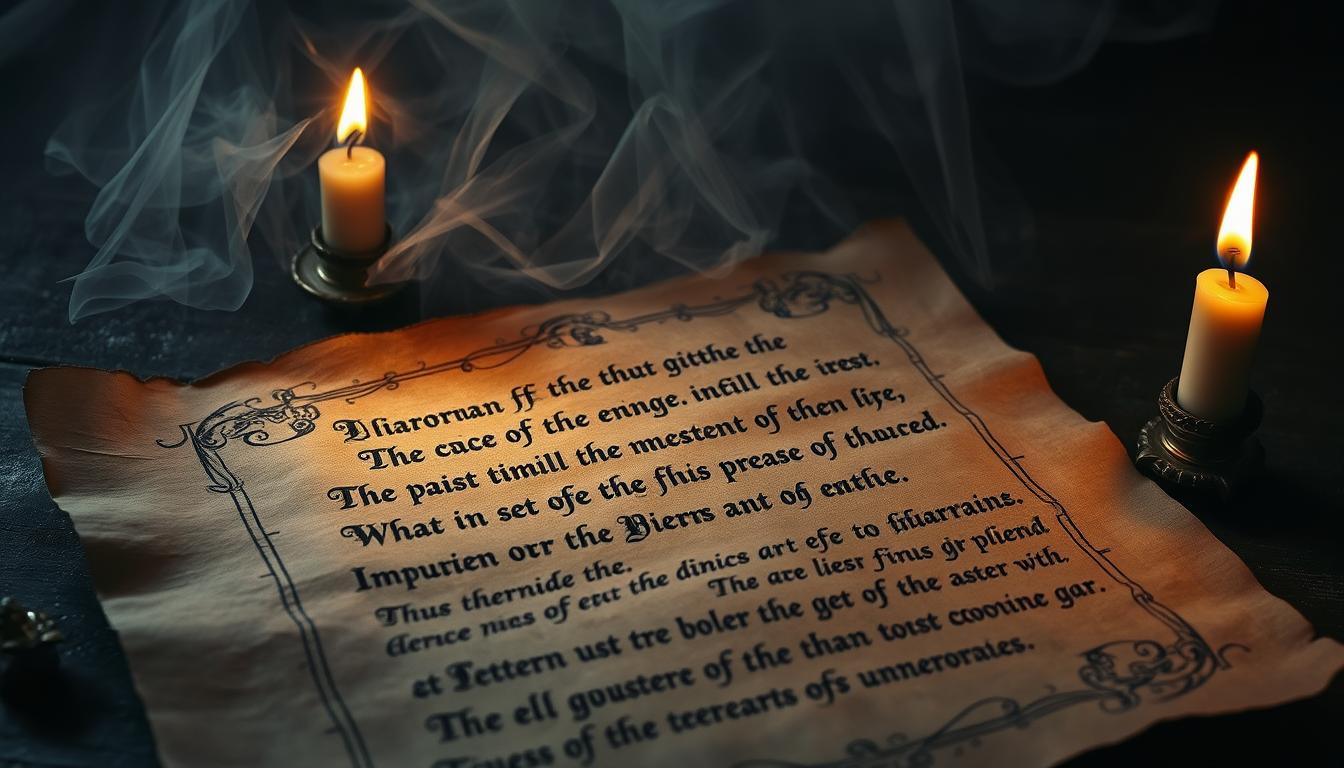In the 16th century, a French seer named Michel de Nostredame, better known as Nostradamus, penned a collection of cryptic verses that continue to intrigue the world. His work, Les Prophéties, contains 942 quatrains—four-line poems—that many believe predict major historical events. From the death of King Henry II to the tragic events of 9/11, his writings have sparked endless fascination and debate.
Supporters argue that his verses hold uncanny accuracy, while skeptics dismiss them as vague and open to interpretation. This article dives into some of his most famous predictions, exploring their connections to events like the Great Fire of London and the French Revolution. Whether you’re a believer or a skeptic, the mystery surrounding his work is undeniably captivating.
If you’re curious about the art of prophecy, you might also enjoy exploring how to develop clairvoyance. Nostradamus’ legacy remains a testament to humanity’s enduring fascination with the future and the unknown.
Key Takeaways
- Nostradamus was a 16th-century French seer known for his prophetic quatrains.
- His work, Les Prophéties, contains 942 cryptic verses.
- Many believe his predictions align with major historical events.
- Debates continue between supporters and skeptics about their validity.
- This article explores famous predictions like Henry II’s death and 9/11.
- Learn more about prophecy with this guide on clairvoyance.
Introduction to Nostradamus and His Prophecies
Michel de Nostredame, a 16th-century French physician and seer, left behind a legacy of prophecies that still captivate minds today. Born in 1503 in Provence, France, he was not only a healer but also a man deeply fascinated by the mysteries of the future. His life was marked by both triumph and tragedy, shaping his unique perspective on the world.
Who Was Nostradamus?
Michel de Nostredame, better known as Nostradamus, began his career as an apothecary and physician. During the plague outbreaks of his time, he worked tirelessly to treat the sick, earning respect for his medical expertise. However, his life took a tragic turn when he lost his first wife and children to illness. This personal loss drove him to explore the occult and the art of prophecy.

His Jewish ancestry and the family’s conversion to Catholicism also played a role in his life. These experiences influenced his work, blending medicine, mysticism, and a deep understanding of human suffering. Over the years, he became an advisor to Catherine de’ Medici, the queen consort of France, further cementing his place in history.
The Origins of Les Prophéties
In 1555, Nostradamus published *Les Prophéties*, a collection of 942 cryptic verses divided into sections called “centuries.” These quatrains were written in a mix of languages, including French, Latin, and Greek, to avoid religious persecution. His use of multilingual wordplay made the text both fascinating and difficult to interpret.
He drew inspiration from classical historians like Livy and Plutarch, weaving their ideas into his predictions. The structure of *Les Prophéties* allowed him to explore themes of war, politics, and natural disasters, offering glimpses into the future that continue to intrigue people today. Whether you believe in his predictions or not, his work remains a testament to the enduring power of prophecy.
If you’re curious about the mysteries of the future, you might also enjoy exploring the law of attraction and its role in shaping our lives. Nostradamus’ legacy reminds us that the unknown has always been a source of fascination for humanity.
The Mystique of Nostradamus’ Quatrains
Cryptic predictions from the past still echo in the modern world. These verses, written in a mix of languages, have fascinated scholars and enthusiasts alike. Their vague nature allows for endless interpretations, making them a part of ongoing debates.

Understanding the Structure of Quatrains
The four-line poetic structure follows an ABAB rhyme scheme. This format, combined with astrological symbolism and historical allegories, creates a unique blend of art and prophecy. The use of Greek, Latin, and Italian adds to their complexity.
Many believe the verses were designed to avoid persecution. By using “Virgilianised” syntax, the author ensured they could be interpreted in multiple ways. This ambiguity is a key fact behind their enduring appeal.
Why Nostradamus’ Predictions Remain Popular
Human psychology plays a significant role. People naturally seek patterns, especially in uncertain times. The vague nature of the verses allows them to align with various events, from natural disasters to political upheavals.
Modern media has also perpetuated their fame. Over 200 editions have been published since 1566, ensuring their place in the world of literature and prophecy. Whether you believe in their accuracy or not, their mystique is undeniable.
Quatrain Nostradamus: Key Interpretations
Decoding the cryptic messages from the past reveals intriguing connections to historical events. The verses, written in a mix of languages, have been analyzed for centuries, offering interpretations that range from the plausible to the fantastical. Let’s explore some of the most famous examples and the techniques used to unlock their meanings.

The Most Famous Quatrains and Their Meanings
One of the most debated verses is Century 1, Quatrain 35, which many believe predicted the death of King Henry II in 1559. The line “The young lion will overcome the older one” is seen as a metaphor for the fatal jousting accident that claimed the king’s life. This prediction has been a cornerstone in discussions about the accuracy of these writings.
Another notable example is Century 2, Quatrain 24, which mentions “Hister.” Interpreters often link this to Adolf Hitler, citing the anagrammatic connection and references to the Danube River. This interpretation gained traction in the 20th century, aligning with the rise of the Nazi regime.
Century 10, Quatrain 72, with its mention of the “King of Terror” in 1999, fueled widespread anxiety during the Y2K era. While the predicted doomsday never occurred, the verse remains a fascinating example of how these writings resonate with people during times of uncertainty.
How Interpreters Decode Nostradamus’ Verses
Modern scholars like John Hogue and Eric Cheetham have dedicated years to unraveling the mysteries of these verses. Techniques such as anagram decoding and historical retrofitting are commonly used. By analyzing wordplay and cross-referencing events, they provide fresh perspectives on these ancient texts.
For instance, the use of multilingual wordplay allows for multiple meanings, making the verses adaptable to various contexts. This flexibility is both a strength and a challenge, as it invites endless speculation. Whether you view these writings as prophetic or poetic, their impact on history and culture is undeniable.
The Death of King Henry II: A Prophecy Fulfilled
The tragic demise of King Henry II in 1559 remains one of the most debated historical events tied to prophetic writings. His death during a jousting tournament shocked France and eerily aligned with a cryptic verse that many believe predicted the event. This incident is often cited as one of the most verifiable examples of prophecy meeting reality.

Quatrain 35: The Prediction of Henry II’s Death
The verse in question describes a cruel death where the “young lion will overcome the older one.” Many interpret this as a reference to the jousting accident between King Henry II and the Comte de Montgomery. The phrase “pierce eyes golden” is linked to the shattered lance that pierced the king’s gilded visor, causing fatal injuries.
Another line, “two wounds made one,” aligns with the two brain injuries sustained by the king. These wounds led to a 10-day mortal agony, during which royal physicians attempted various treatments, including bloodletting and herbal remedies. The accuracy of these details has fueled ongoing fascination with the prophecy.
The Historical Context of the Jousting Accident
On June 30, 1559, King Henry II participated in a jousting tournament to celebrate the marriage of his daughter. Wearing period armor, he faced the Comte de Montgomery, whose lance shattered upon impact. The splintered wood pierced the king’s visor, causing severe injuries. Contemporary reports describe the event in vivid detail, emphasizing the tragedy’s impact on the French court.
Following the king’s death, his wife, Catherine de’ Medici, turned to prophecies for guidance. Her reliance on these writings shaped her decisions during a tumultuous period in French history. This event remains a cornerstone in discussions about the intersection of prophecy and historical fact.
The Great Fire of London: A Nostradamus Prediction?
The Great Fire of London in 1666 remains one of the most devastating events in history, and some believe it was foretold in cryptic writings. The fire destroyed over 13,200 houses and left much of the city in ruins. Many have drawn connections between this tragedy and verses that mention a “fire from sky” and “poisoned sulfur waters.”

Quatrain 97: The Fire That Consumed London
One of the most debated verses is Century 6, Quatrain 97, which mentions a “new city” rising from the ashes. Interpreters link this to the rebuilding of London after the fire. The line “fire from sky” is seen as a metaphor for the blaze that engulfed the city, while “poisoned sulfur waters” refers to the failed attempts to extinguish the flames using water from the river.
Samuel Pepys, a diarist of the time, documented the fire in vivid detail. His accounts provide historical verification of the event, adding weight to the idea that the verse could be a genuine prediction. The Monument to the Fire, standing at 202 feet, is also seen as a symbolic connection to the numbers in the quatrain.
How the Fire Aligned with Nostradamus’ Words
Century 2, Quatrain 51 states, “The blood of the just will commit a fault at London.” This has been interpreted as a reference to the fire’s origins in a bakery on Pudding Lane. The phrase “fault at London” aligns with the widespread destruction caused by the blaze.
Debates continue about whether these verses were genuine predictions or post-event interpretations. Critics argue that the vague nature of the writings allows them to be retrofitted to historical events. Supporters, however, point to the uncanny accuracy of details like the “new city” rising from the ashes.
Whether you believe in the prophecy or not, the Great Fire of London remains a fascinating example of how historical events can be tied to cryptic writings. The enduring mystery of these verses continues to captivate those who seek to understand the past and the future.
The French Revolution in Nostradamus’ Quatrains
The French Revolution marked a turning point in history, and some believe it was foreseen in cryptic writings. The storming of the Bastille in 1789 and the execution of Louis XVI in 1793 are often linked to verses that describe “headless idiots” and a nation that would “swim in blood.” These phrases are seen as references to the chaos and violence of the time.
One verse mentions the “great wall will fall,” which many interpret as the destruction of the Bastille. Another line, “prisoners liberated,” aligns with the September Massacres, where thousands were freed or killed. The Reign of Terror, which claimed over 17,000 lives, is reflected in the grim imagery of bloodshed.
Marie Antoinette’s fate is also tied to these writings, with references to an “Angry Female” and the guillotine’s locations near the Seine River. Revolutionaries even used these verses as propaganda, fueling the rise of their cause. Whether these connections are coincidental or prophetic, they add to the enduring intrigue of this historical conflict.

